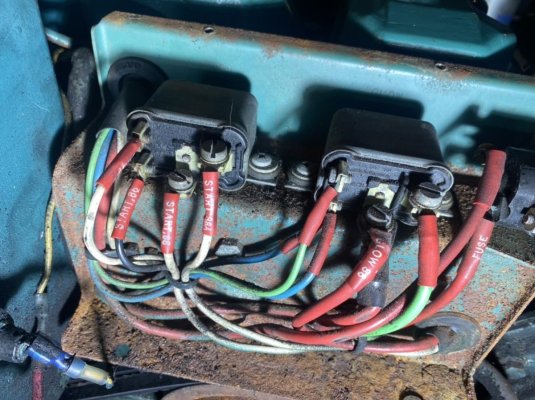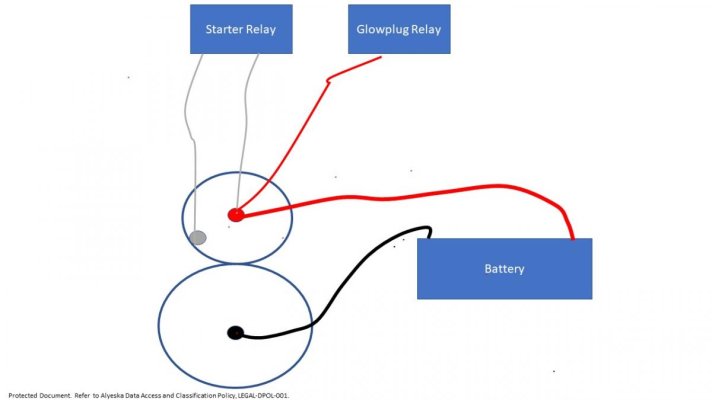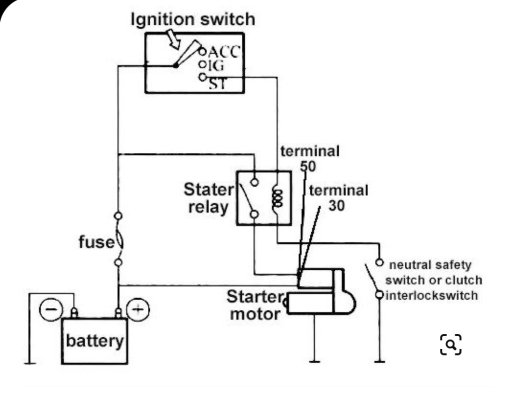I’m new to this and am trying to better understand how a starter relay fits into/ benefits a starter circuit system. I’ve done some reading but still have questions. In my layman brain, it seems like the relay does the same thing as the solenoid mounted on top of the starter; creating a circuit when a small amount of current is generated by turning the key. Why does it need to be involved, or what benefit does it have? Why can’t the wire carrying the current from the ignition be directly wired to the ignition mount terminal on the solenoid; it sounds like it some application it does connect directly to the solenoid.
Secondly, on the solenoid positive power post where the heavy gauge wire is connected to the battery, also resides a ring connector that combines two wires, a white wire going back to the relay (assume to complete the circuit), and a heavier gauge red wire that connects to the glow plug relay. How does this power to the glow plug relay fit into the system? In my mind I need heat to the glow plugs prior to engaging the engine and do so by partially turning the key prior to starting.
I should note that my engine is an older Volvo Penta engine from the 80’s.
I appreciate you guys chiming in to help me understand! Thanks, Ryan
Secondly, on the solenoid positive power post where the heavy gauge wire is connected to the battery, also resides a ring connector that combines two wires, a white wire going back to the relay (assume to complete the circuit), and a heavier gauge red wire that connects to the glow plug relay. How does this power to the glow plug relay fit into the system? In my mind I need heat to the glow plugs prior to engaging the engine and do so by partially turning the key prior to starting.
I should note that my engine is an older Volvo Penta engine from the 80’s.
I appreciate you guys chiming in to help me understand! Thanks, Ryan



